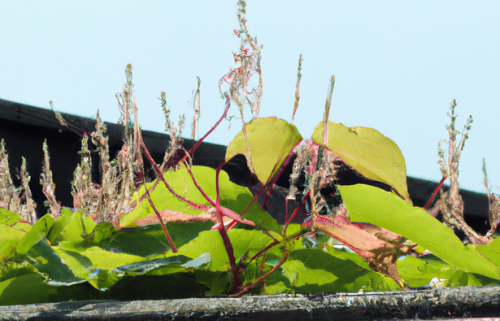Japanese Knotweed in Building Surveys
 Japanese Knotweed (Fallopia japonica) is a highly invasive plant species that has garnered significant attention in the realm of property surveys and real estate transactions. Its aggressive growth and potential for structural damage make it a crucial consideration for both buyers and sellers. This article delves into the implications of Japanese Knotweed in building surveys, exploring its impact, management strategies, and legal aspects.
Japanese Knotweed (Fallopia japonica) is a highly invasive plant species that has garnered significant attention in the realm of property surveys and real estate transactions. Its aggressive growth and potential for structural damage make it a crucial consideration for both buyers and sellers. This article delves into the implications of Japanese Knotweed in building surveys, exploring its impact, management strategies, and legal aspects.
Understanding Japanese Knotweed
Japanese Knotweed is a perennial plant native to East Asia that was introduced to the UK in the mid-19th century as an ornamental plant. Known for its rapid growth and resilience, it can spread quickly through its underground rhizomes, causing damage to buildings, foundations, and infrastructure.
Key Characteristics:
- Appearance: Large, heart-shaped leaves and bamboo-like stems that can grow up to 3 meters tall.
- Seasonality: Dormant in winter, with new shoots emerging in spring and growing vigorously throughout summer.
- Impact: Can penetrate through cracks in concrete, asphalt, and building foundations, compromising structural integrity.
Japanese Knotweed in Building Surveys
When conducting a building survey, the presence of Japanese Knotweed can significantly impact the property’s valuation and desirability. Here are the primary considerations:
- Identification: Surveyors are trained to identify Japanese Knotweed and assess its proximity to buildings or structures. Its presence can be confirmed through visual inspection and historical records of infestation in the area.
- Risk Assessment: Surveyors evaluate the risk posed by Japanese Knotweed based on its distance from buildings, potential for damage to foundations, and historical management practices on the property.
- Impact on Property Value: Properties with Japanese Knotweed infestations may experience reduced market value due to the perceived risk and potential costs of eradication.
- Mortgage Lending: Some mortgage lenders have strict policies regarding properties affected by Japanese Knotweed. They may require evidence of a management plan or treatment program before approving a mortgage.
Management Strategies
Managing Japanese Knotweed requires a coordinated approach involving specialized treatment methods and legal compliance:
- Herbicide Treatment: Chemical treatment by licensed professionals is the most common method for controlling Japanese Knotweed. It involves multiple applications over several seasons to eradicate the plant and prevent regrowth.
- Physical Removal: Excavation and removal of affected soil and plant material may be necessary for severe infestations. This method should be conducted carefully to prevent spreading fragments that can regenerate.
- Root Barriers: Installing impermeable barriers (e.g., membranes) around affected areas can help contain the spread of Japanese Knotweed rhizomes.
- Monitoring and Maintenance: Regular monitoring is essential to detect any regrowth or new infestations. A long-term maintenance plan ensures ongoing control and compliance with legal obligations.
Legal Considerations
Dealing with Japanese Knotweed involves navigating legal responsibilities and obligations:
- Property Law: Property owners have a legal duty to prevent the spread of Japanese Knotweed to neighbouring properties. Failure to manage infestations can lead to legal disputes and potential liability for damages.
- Environmental Legislation: The Wildlife and Countryside Act 1981 and the Environmental Protection Act 1990 classify Japanese Knotweed as “controlled waste.” Disposal must comply with regulations to prevent environmental harm.
- Seller’s Disclosure: Sellers are legally obligated to disclose the presence of Japanese Knotweed in the property’s sale documents. Failure to disclose known infestations can result in legal consequences for misrepresentation.
Conclusion
Japanese Knotweed presents significant challenges in the context of property surveys and real estate transactions. Its invasive nature and potential for structural damage underscore the importance of thorough assessment, management, and compliance with legal obligations. Whether you’re buying or selling a property affected by Japanese Knotweed, understanding its implications and implementing effective management strategies are essential steps toward ensuring a smooth and legally compliant transaction. By addressing Japanese Knotweed proactively, property owners can protect their investments and mitigate potential risks associated with this persistent plant species.




